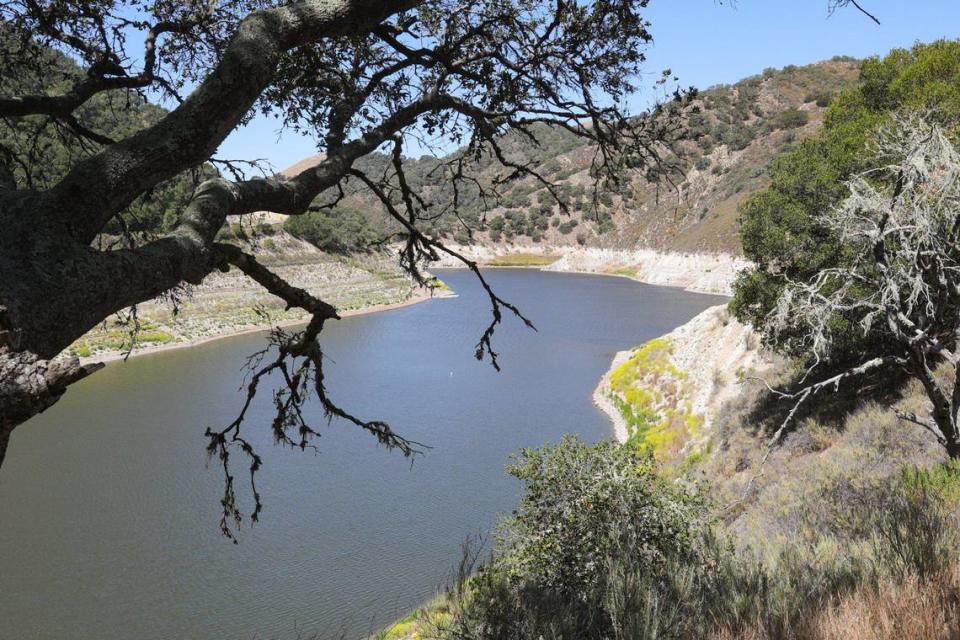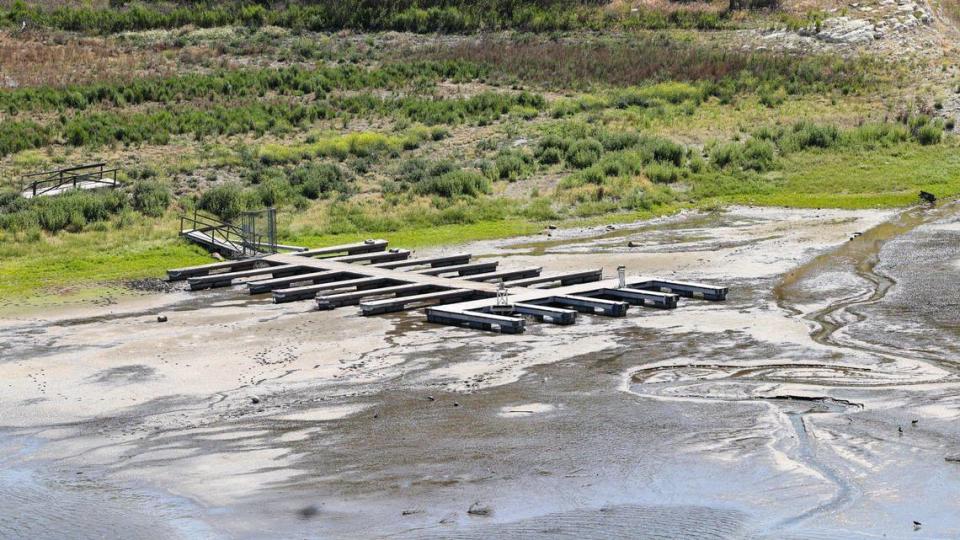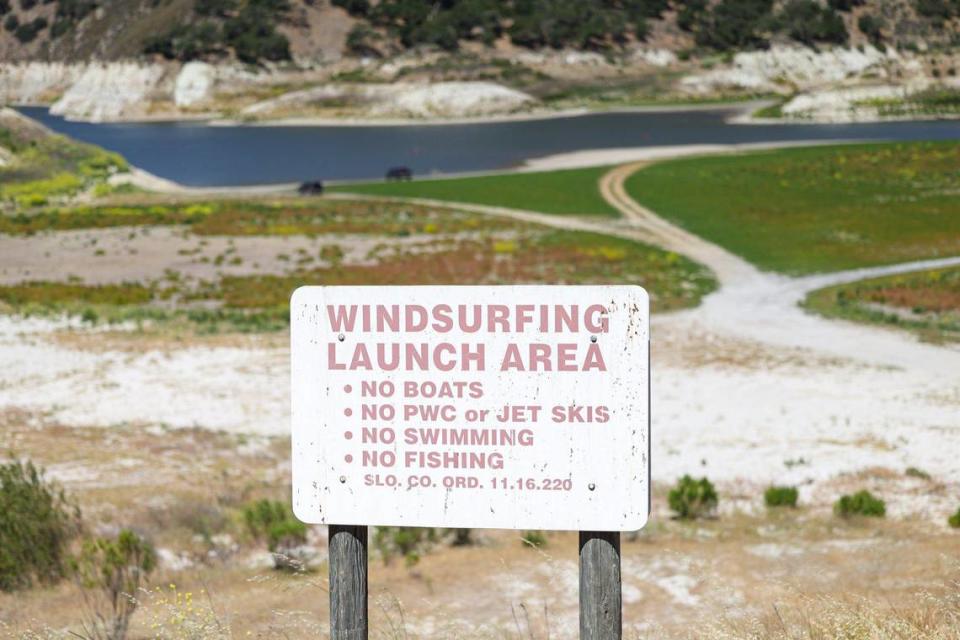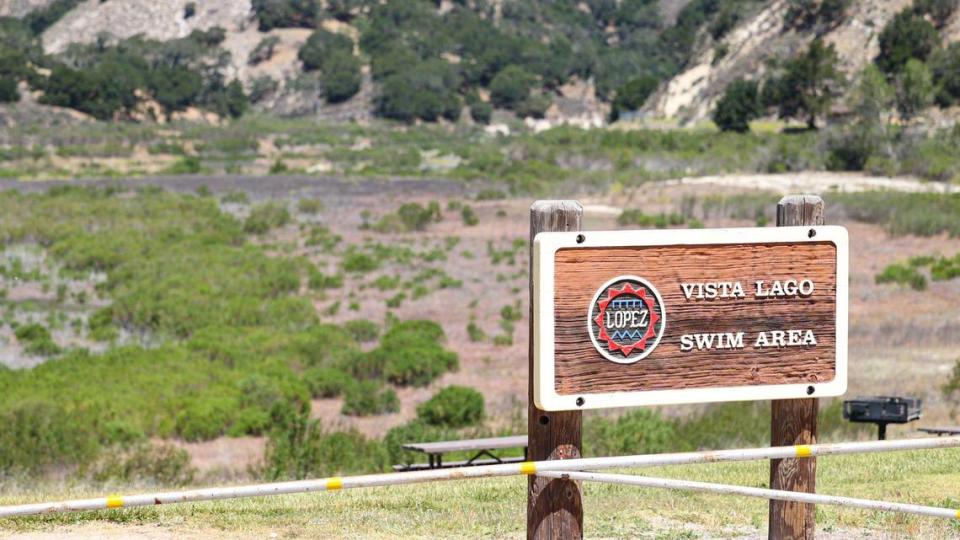SLO County cities, towns call for cutbacks as drought worsens: ‘All the easy water is gone’
- Oops!Something went wrong.Please try again later.
As severe drought conditions continue to hammer San Luis Obispo County, some cities and towns are requiring residents to cut back on water use — while others say they still have plenty to supply.
Some cities, such as Pismo Beach and Morro Bay, have declared so-called “severely restricted water supply conditions,” while other communities, such as San Luis Obispo and Paso Robles, aren’t expecting shortages despite the drought conditions expected to worsen throughout the summer.
Local leaders expressed frustration over a recent executive order from Gov. Gavin Newsom that could potentially require all urban water suppliers, regardless of the state of their water supplies, to force cutbacks.
“It’s very confusing for our constituents when they hear from the state that there’s going to be water restrictions placed because of the drought,” Paso Robles Mayor Steve Martin said. “Obviously, there is a drought and, obviously, some areas are suffering from it quite severely. But in the city of Paso Robles, we do not have a water shortage.”
Other communities take a different view.
On May 9, the city of Grover Beach became the latest county municipality to declare a water shortage and is now mandating its water users to reduce their use.
“We understand that this is going to be difficult for Grover Beach residents, but ensuring we have a short-term and long-term water supply is a top priority for the council and the city,” Grover Beach Mayor Jeff Lee said in a statement on May 10. “We have seen our residents make the necessary reductions in the past and know each of us can do it again.”

Grover Beach declared a stage two water shortage emergency, meaning its residents must reduce water consumption by 10%.
The city joins at least three other municipalities in San Luis Obispo County that have required water restrictions due to the current drought. These include Pismo Beach, Arroyo Grande and Morro Bay.
The difference between cities such as Grover Beach and Paso Robles can’t entirely be chalked up to their residents’ water conservation efforts — Grover Beach residents use one of the lowest amounts of water per person in the county — but rather to the historical actions of city councils and water purveyors.
“I think we’re all aware that the security that we feel today is due to investments that were made by past generations of council members, community members and hard work by city staff,” Mychal Boerman, San Luis Obispo’s deputy director of utilities, said during a May 3 San Luis Obispo City Council meeting. “It’s commonly referred to in our industry that all the cheap water is gone; all the easy water is gone. We’re not seeing new reservoirs go in.”
However, the playing field may soon be leveled if all local water providers are mandated to slash their customer’s water allocations.
On March 28, Gov. Newsom issued an executive order that instructed the California Water Resources Control Board to consider requiring urban water suppliers to activate, at a minimum, level two of their water shortage contingency plans. The board must decide on whether it will follow through with Newsom’s intentions by May 25.

SLO County cities respond as lake levels drop
Most urban water suppliers have water shortage contingency plans submitted to the state that outline certain actions to be taken when drought conditions and water supply levels reach specific benchmarks. The plans are each unique depending on factors such as water sources and the size of the population served, and must be updated every five years.
The city of Arroyo Grande, for example, entered its first stage out of three in its plan in October after it became apparent that Lopez Lake, one of its main sources of water, was soon to drop below 15,000 acre-feet of water in storage.
Lopez Lake now holds about 13,900 acre-feet of water, the lowest it has been measured at since early 2017, according to the San Luis Obispo County Public Works Department.
Because Lopez Lake sits at under 15,000 acre-feet of water, San Luis Obispo County’s so-called “low reservoir response plan” has been implemented, cutting deliveries by 10% to the various municipalities that rely on it. The reservoir is expected to dip below 10,000 acre-feet in storage by October, therefore requiring deliveries to be slashed by 20%.
Other reservoirs that supply drinking water are also shrinking as much of the state is thrust into more extreme conditions of drought. Santa Margarita Lake, for example, has dropped by 835 acre-feet, or 272 million gallons, of water since February.
Lake Nacimiento in northern San Luis Obispo County held 99,105 acre-feet of water as of Thursday, which is 26% capacity, according to the Monterey County Water Resources Agency. That’s a drop in 1,325 acre-feet of water, or about 432 million gallons, compared to the week before.
Cities that rely heavily on these reservoirs must typically implement water restrictions earlier than other cities that have a more diverse water portfolio and also tap into groundwater or state water.

Communities see drought’s impact on water supplies
Local communities normally troubled the most by drought include Cambria and Los Osos. Each has has only one source of water: groundwater.
Although both North Coast communities are under extremely tight building restrictions due to the lack of water — which the California Coastal Commission recently sent stern letters to San Luis Obispo County officials to remind them about — they are approaching water restrictions differently in the current drought.
Los Osos has been in a stage three of a five-stage water shortage emergency since 2015.
Cambria is currently in the least-restrictive stage one of its six-stage water shortage contingency plan, although the Cambria Community Services District declared a stage four water shortage emergency as recently as July 2021.
District staff plan to bring a recommendation to change that stage during the June 9 board meeting, according to Ray Dienzo, the Cambria’s utilities department manager. Which water shortage stage the community will be placed in remains to be decided.

But even communities with varied water sources cannot always sit comfortably when droughts drag on.
“The rains in December were marvelous, but not near anything establishing a trend line in the right direction,” Pismo Beach city manager James Lewis said in a Jan. 18 Pismo Beach City Council meeting.
During that meeting, the city of Pismo Beach declared it was in “severely restricted water supply conditions,” the third most severe out of its four levels of conditions.
At the time, Pismo Beach saw its allocations from the State Water Project slashed completely. Lopez Lake was projected to continue shrinking, and the city’s groundwater supply from the Santa Maria basin was on the edge of being infiltrated by seawater intrusion.
Pismo Beach remains in the “severely restricted water supply conditions” despite allocations from the State Water Project being restored to 5%.
Other Central Coast municipalities that receive state water include the cities of Morro Bay and Avila Beach and Oceano Community Services District. Schools, the prison and the county also rely on state water.
Only water purveyors with their straws in several large buckets can say that they do not foresee declaring any sort of water shortage.
San Luis Obispo, for example, has five water sources to choose from: Lake Nacimiento, Santa Margarita Lake, Whale Rock Reservoir, recycled water and groundwater. Paso Robles gets its water from Lake Nacimiento, the Salinas River, recycled water and groundwater.
But Paso Robles’ mayor says his constituents have paid the price in their water bills over the years for the various water infrastructure improvements for the city of Paso Robles.
Martin sees any sort of statewide order to declare a stage two water shortage emergency — which would require his residents to reduce water use by 20% — as unfair.
“As of yet I have not seen any indications that there are going to be any exemptions to any sort of restriction the state puts out,” Martin said. “Unfortunately, for the city of Paso Robles, which has enough water today and has enough water for its future, that’s going to mean unreasonable restrictions.”

